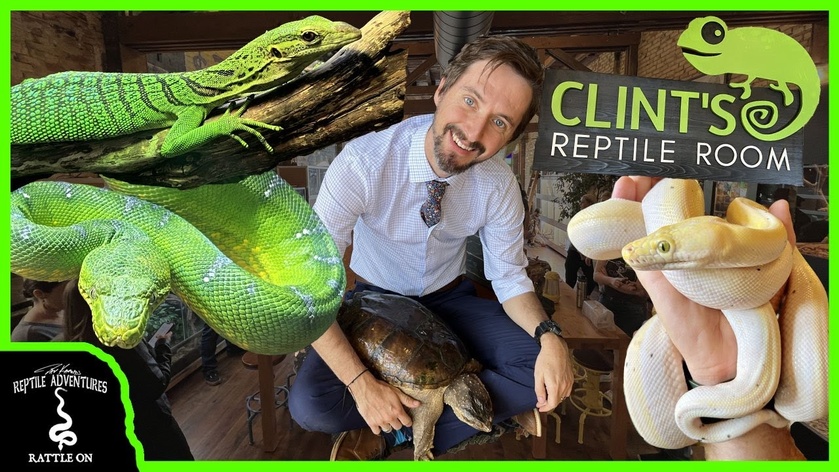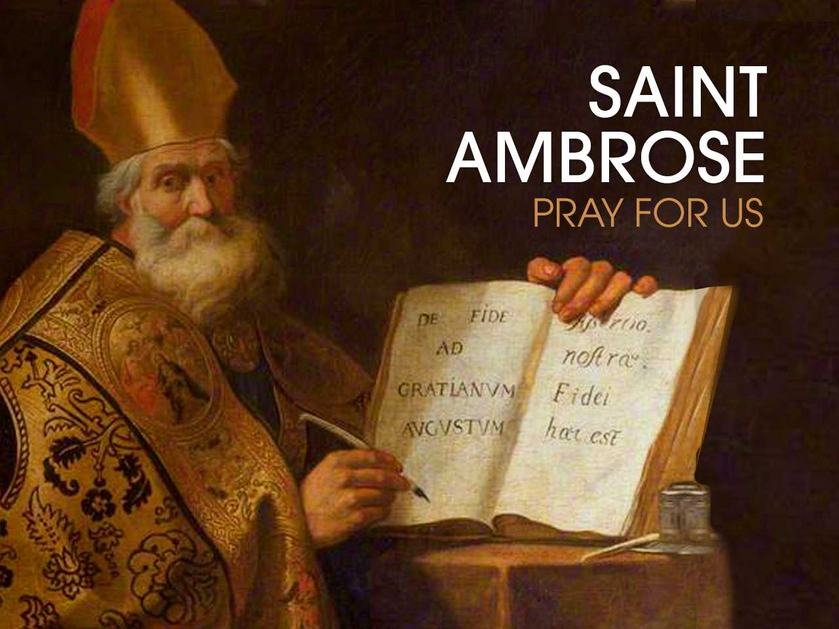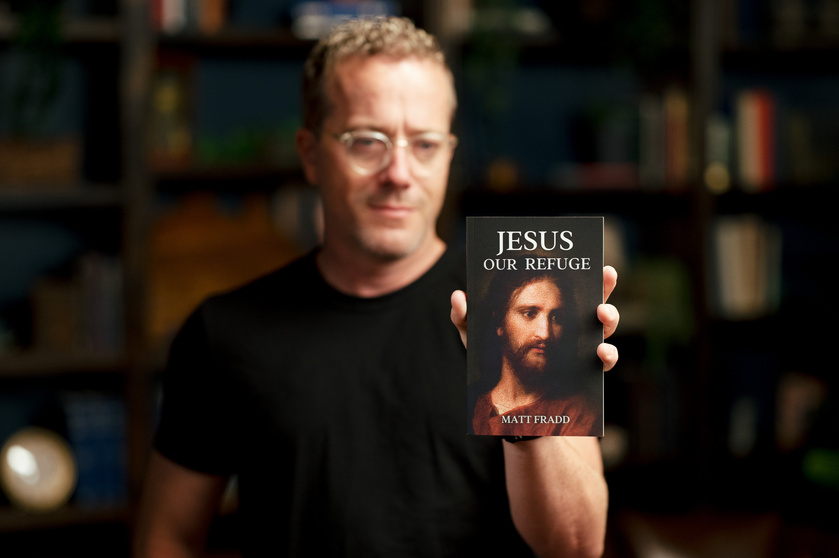Pop-Cultured Catholic #23: How Zoologist Clint Laidlaw of “Clint’s Reptiles” Demonstrates Ideal Debating of Religion, Science, and Other Topics
“Well hi there.” For today’s post, I would like to focus on an educational web series available on YouTube. That is, for educational shows can very much be a part of pop-culture too. And this particular show is one that has not only taught about zoology, but also presented the ideal way to debate religious and scientific interpretation, which might make Saint Thomas Aquinas proud.
”Clint’s Reptiles” is a YouTube web series hosted by zoologist Clint Laidlaw, who also runs an education center in Utah called Clint’s Reptile Room (Address: 284 S Main St, Springville, UT 84663). One of his series’ most prominent topics is animal care, with many of the episodes focusing on how to properly keep certain animals healthy and happy, whether they are pets at home or animal ambassadors in zoos. These episodes involve Clint presenting a certain animal, sometimes bringing in another expert to weigh in, and rating the animal's feasibility as a pet based on five categories: “Handleability”, “Care”, “Hardiness”, “Availability”, and “Upfront Costs”. The animal earns a score from 0-5 for each category, then the average score is its overall rating. As the show’s name implies, Clint mostly talks about reptiles, but he has also made episodes on other “stinkin’ rad” animals like certain invertebrates, amphibians, mammals, and (non-tetrapod) fishes. One recurring theme is the importance of being able to responsibly care for any animal you try to take on. To drive this point home, Clint has made joke episodes meant to dissuade people from getting certain wild or exotic animals just to keep as pets, by showcasing how they should only be managed by qualified professionals and would earn the lowest pet scores anyway. Such examples include the American alligator, the king cobra, and most challenging of all… the human child! Some of his other educational videos include travel logs to different places, animal taxonomy breakdowns, commentaries on current events related to animals and their conservation, plus reviews and reactions to various animal books, merchandise, etc. But regardless of his video’s topic, Clint always exhibits an infectiously fun, optimistic, and wholesome persona, which many have compared to those of Bob Ross and Mr. Fred Rogers.
Besides being a “Bob Ross” of reptiles and animal care, Clint is also well-versed in evolutionary biology, leading him to do animal phylogeny videos, a yearly series of specials called “Dinosaur December”, and so on. Utilizing the current genetic and fossil evidence, Clint can make taxonomy videos which trace the currently hypothesized evolutionary history of a clade (“clade” being a classification category that encompasses any organism thought to be a common ancestor, along with all organisms thought to be its descendants). Some animal clades he has summarized include those of lizards, crocodilians, whales, bats, lamniform sharks, and insects. For “Dinosaur December”, he has commented on new fossil discoveries, analyzed the phylogenies of different dinosaur lineages (“phylogeny” referring to the evolutionary development and diversification of a clade over time), reviewed media related to dinosaurs, elaborated on how birds are thought to have become the sole surviving dinosaur lineage, and so on. As of today in 2024, his two latest Dinosaur December videos are an analysis of the famous South American predator, Giganotosaurus (“Giant Southern Lizard”), and a joke episode where he and paleontologist Ethan Harvey break down a Tyrannosaurus rex’s life cycle and ecology to judge how well it would rate as a pet. Spoiler alert, the T. rex scores a 0/5 on “Handleability”, “Care”, “Availability”, and “Upfront Costs”, while earning 5/5 for “Hardiness”. Due to its perfect hardiness score and even the T. rex being unable to score lower than 0 for a category, the T. rex’s overall score turns out to be 1.0/5. They jokingly acknowledge that their system technically rated T. rex higher than the human child, providing a reminder that the rating does not always tell the full story, especially with outlier animals.
There is yet another layer to Clint Laidlaw, for he has repeatedly stated that he is a theist who believes in God. I do not know for sure what his exact religious views are. But certain wiki entries claim that he is a Mormon of the LDS Church. This has led to some individual atheists and theists in his audience being surprised that he is both religious and a teacher of evolutionary science at the same time. Yet this has been the norm for many Catholics, with popes like Saint John Paul II declaring the Theory of Evolution and its hypothesized roles in Earth’s history are scientifically sound and consistent with the truths which the Bible intended to convey through Genesis. The Catechism’s Paragraph #159 states, “Though faith is above reason, there can never be any real discrepancy between faith and reason. Since the same God who reveals mysteries and infuses faith has bestowed the light of reason on the human mind, God cannot deny himself, nor can truth ever contradict truth… Consequently, methodical research in all branches of knowledge, provided it is carried out in a truly scientific manner and does not override moral laws, can never conflict with the faith, because the things of the world and the things of faith derive from the same God”. Clint himself has agreed that the existence of the supernatural/metaphysical is, by definition, simply outside the scope of what the scientific method can adequately test and answer. Science is “is a methodology by which we create and test models of what cannot be observed, using what we can”. So the sciences are not the means by which a philosopher can prove or disprove something like the existence of God.
All of Clint’s aforementioned qualities come together in a trilogy of videos he has released over time, “Evolutionary Biologist Reacts to Creationist Arguments”, where he addresses the discourse surrounding Young Earth Creationism and the Theory of Evolution, in ways I think would please Saint Thomas Aquinas himself. His analyses have mostly earned great praise from both religious people and atheists in his audience. Meanwhile, there have also been some individual atheists and theists, who reacted negatively to him in a tribalistic manner. A couple of alleged atheists commented that they can no longer trust a word Clint says, because he openly believes in God. On the other end, fringe Young Earth Creationist Kent Hovind tried to negatively portray Clint on his “Whack An Atheist” web series. Clint has cited rhetoric like that as one reason Hovind “played a nontrivial role in turning me into an atheist in my youth”, before he eventually reverted. Throughout the videos, his techniques echo some strategies of Saint Thomas Aquinas and attitudes of Catholic Apologist Trent Horn.
An Aquinas-like attribute demonstrated by Clint is his willingness to rely on “Steel-Man” arguments when addressing an opponent’s position. One of the most pervasive and underhanded fallacies in philosophical debates is the “Straw-Man”, where one either erects a false representation of an opponent’s position or singles out the most disagreeable and poorly articulated variant of it. In doing so, a person has an easier target to attack, while giving the illusion that he has refuted anyone holding said position. In a good-faith discussion, one should instead try to find or build up the opposite, a “Steel-Man”. In Clint’s paraphrased words, if one can articulate the opponent’s argument in a way which would earn their approval or even make them feel more secure, then he is on the right track. One of the most famous examples is how Saint Thomas Aquinas introduced the Problem of Evil, further fortifying it with arguments like “if one of two contraries were infinite, the other would be completely destroyed”.
One form of Clint’s steel-manning is when he crafts a definition of “created kind”. Per YEC’s tenets, a kind “is a group of organisms descended from the same original ancestors that were specially created by God”. He points out how it is becoming increasingly recognized in YEC circles, that the basic concepts of natural selection and new species evolving from common ancestors do not even conflict with the views necessary to make one a YEC. Plus, a “created kind” as YECs envision it would also qualify as a clade. And when YECs assert that an organism can never evolve to become a different kind, even if its descendants become distinct species unable to interbreed, they are unknowingly mirroring the modern evolutionary terminology that “you cannot evolve out of a clade”. This is why it has become more common for scientists to use terms like “non-avian dinosaurs”. The birds descending from a lineage of dinosaurs are still dinosaurs and, by extension, reptiles in the context of phylogenetic classification. But while YECs are increasingly accepting evolution in general, they disagree with Charles Darwin’s further hypothesis that all life has genetically descended from either one common ancestor or a relatively small number of common ancestors independently coming into existence. Instead, they believe that there were many common ancestors independently created within mere 24-hour days of each other. Think of “a phylogenetic forest instead of a (single giant) phylogenetic tree”. Once Clint has established both a difference and the unexpected common ground between mainstream scientific consensus and YEC, it is usually then that he begins making his arguments. This is an important step, for many individual YECs have displayed misunderstandings of what they are trying to refute, and it is likewise unfair to attack stances that a YEC may not even hold. His effort to do so reportedly even caused a few people to label him as “some sort of clandestine creationist double agent”.
In one of the funniest parts, Clint’s second video illustrates a goofy comment exchange on social media, then uses it to convey an important truth that one can be on the right side of a debate and believe the right conclusion, yet present the most invalid arguments in said debate. 29:22 minutes into his trilogy’s second video, Clint brings up a video on social media, allegedly showing a small meteorite which crashed into someone’s backyard. One commenter claimed that it can’t be a meteorite, because such a rock hitting Earth at the speed of light would be far more catastrophic. When another commenter replied that only light travels at the speed of light, the first one doubled down. He claimed that sunlight only takes 8 minutes to touch Earth, while spacecrafts could match that speed since they only take 9 minutes to leave Earth’s shield… as if the sun somehow sits just outside Earth’s atmosphere. Ironically, Clint concludes that the video was indeed fake, technically making the first commenter correct. Despite this, the first commenter has presented one of the worst arguments for that conclusion possible, relying on the premise that spacecrafts can fly at lightspeed like in Star Wars (or Ludicrous Speed, if one is a fan of Mel Brooks' "Spaceballs" ). Clint uses this as an example of how believing the right conclusion means little if one does not have a good grasp on why something is right, especially if one is trying to win other people over. He cites this as another reason to respectfully hear other people’s differing beliefs/arguments, avoid tribalistic thinking, be open to learning common truths from others, craft valid arguments, and engage in good faith. Saint Thomas Aquinas has gained a reputation for doing this too, in which he would often incorporate the writings of Aristotle, Arabic philosophers, etc.
Finally, Clint has highlighted another important aspect of scientific discourse: the consensus is an ever-changing entity, and some people’s uses/interpretations of scientific studies can be similarly fallible as some people’s uses/interpretations of holy scripture. One time Clint highlights this is when he revisits the definitions of a “Fact”, “Hypothesis”, “Theory”, and “Law”. Scientific laws are are a description “of phenomena that occur, as far as we have observed, in exactly the same way, every time, under a specific set of circumstances”. During Part 3, he explains that “laws” in this context are not unbreakable, and that it is possible for future observations to show that a scientific law’s pattern does not always hold. If that occurs, then a law will either have its given conditions modified or be done away with. And sometimes, the scientific consensus of something constantly changes as new evidence or studies come to light. One often parodied example both myself and Clint are familiar with concerns the anatomy and lifestyle of the famous African dinosaur, Spinosaurus aegyptiacus. I will try to include a graphic of its ever-changing reconstructions.
Catholic Apologist Trent Horn shares a similar balance of attitudes in two of his videos. In one video, Trent points out that, while the Catholic Church officially considers the scientific consensus on Earth’s evolutionary history to be compatible, Catholics are still technically free to believe in Young Earth Creationism. However, a Catholic YEC should still seek to have his beliefs grounded in reason and not falsely assert in the Church’s name that YEC is the only acceptable way to interpret Genesis, lest needless alienation is caused and/or scandalously embarrassing arguments become associated with Catholicism. Trent has made another video calling out people’s tendency to either treat “The Science” as an infallible idol or reject basic scientific inquiry outright.
These attitudes expressed by Clint Laidlaw, Saint Thomas Aquinas, and Apologist Trent Horn are wise behaviors we should live by, whether the topic we are debating pertains to theology, science, social justice, and so on. For today, my supplementary video links will be split between Clint’s YouTube homepage and three Creationism videos, along with Trent Horn’s two videos I referenced.
Clint’s Trilogy of Videos on YEC:
1.) The Clint's Reptiles YouTube Homepage
https://www.youtube.com/@ClintsReptiles
2.) “Evolutionary Biologist Reacts to Creationist Arguments” (Part 1)
https://www.youtube.com/watch?v=QvK_Onjzj9I
3.) “Evolutionary Biologist Reacts to Young Earth Creationist Arguments“ (Part 2)
https://www.youtube.com/watch?v=WBSP9Uvq52I
4.) “Evolutionary Biologist Reacts to Creationist Arguments“ (Part 3)
https://www.youtube.com/watch?v=L1jtiDmyd8s
Trent Horn’s Pair of Videos Cited:
1.) “An Embarrassing Young Earth Creationist Argument”
https://www.youtube.com/watch?v=0BBYAMZ3hqo
2.) “Should Christians ‘Trust the Science’?”
https://www.youtube.com/watch?v=gO9I4KTBO14






























